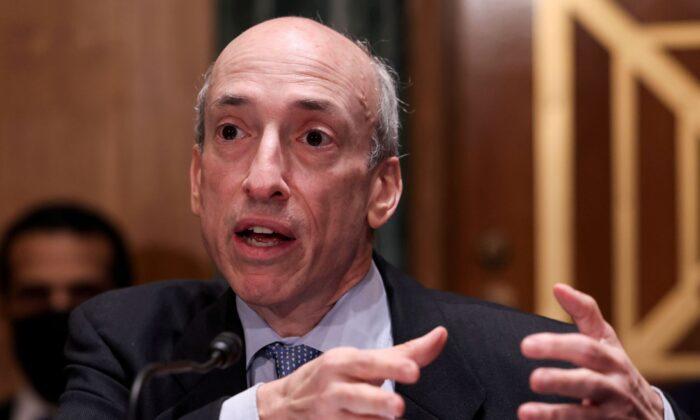Securities and Exchange Commission (SEC) Chairman Gary Gensler supports the White House’s budget request for the stock market watchdog. He warned, however, that the funds appropriated are tens of millions of dollars less than what his federal agency originally requested for the upcoming fiscal year.
The Senate Appropriations Committee appropriated $2.4 billion to the SEC. This was $194 million more than fiscal year 2023, although but nearly $73 million less than Mr. Gensler’s initial proposal. This, Mr. Gensler told lawmakers, would prevent the SEC from keeping up with the various market challenges present today.
He explained during a July 19 Senate Appropriations Committee hearing that the SEC’s fiscal year 2024 request would ensure the agency’s Examinations Division personnel would increase to 1,144 full-time examiners. While the agency is 3 percent larger than it was in 2017, Mr. Gensler noted that financial markets have grown exponentially during that span.
According to Mr. Gensler, the number of clients of registered investment advisers surged close to 70 percent to 57 million from 34 million. In addition, average daily trading in equity markets expanded to 77 million transactions from 30 million transactions.
This type of growth and immense change can “also mean more possibility for wrongdoing,” he asserted.
“As the cop on the beat, we must be able to meet the match of bad actors,” Mr. Gensler said. “Thus, it makes sense for the SEC to grow along with the expansion and increased complexity in the capital markets.”
He cited the “Wild West of the crypto markets” as an example of this concern. He revealed that the SEC plans to install “new instruments, experience, and assets” with the objective to address misconduct within the cryptocurrency industry.

“Technology is also rapidly transforming our markets and business models, whether it’s electronic trading the cloud, artificial intelligence, predictive data analytics,” he said. “The Wild West of the crypto markets is rife with noncompliance where investors have put hard-earned assets at risk in a highly speculative asset class.”
Pushback From Lawmakers
Mr. Gensler did receive some pushback from lawmakers throughout the hearing, including Sen. John Kennedy (R-La.).“Where was the SEC?” on the issue of the failed crypto exchange FTX and its former CEO Sam Bankman-Fried, Mr. Kennedy asked.
Before FTX decimated the crypto market, the SEC possessed the authority to regulate crypto. So, the senator noted, the SEC could have had an investigator speak with Mr. Bankman-Fried and done some digging into what was happening.
“This was an accident waiting to happen,” Mr. Kennedy said.
Mr. Bankman-Fried is set to stand trial in October on 13 federal counts, including conspiracy to commit money laundering and wire fraud. If convicted on all 13 charges, he could face life in prison.
SEC Fears AI Is Threat of the Future
Meanwhile, since transitioning from the Commodity Futures Trading Commission to the SEC, Mr. Gensler has targeted Bitcoin and the entire cryptocurrency industry. Last month, he told CNBC that the U.S. economy doesn’t need cryptocurrency or other digital tokens.“We already have digital currency. It’s called the U.S. dollar. It’s called the euro, or it’s called the yen; they’re all digital right now,” he told the business news network.
However, in recent months, the SEC chief has also been focused on generative artificial intelligence (AI).
As a result, he requested SEC staff to produce regulatory recommendations that can address the ethical concerns over AI, benefiting advisers and brokers while harming investors.
“In finance, conflicts may arise to the extent that advisers or brokers are optimizing to place their interests ahead of their investors’ interests,” Mr. Gensler stated. “That’s why I’ve asked SEC staff to make recommendations for rule proposals for the Commission’s consideration regarding how best to address such potential conflicts across the range of investor interactions.”
“There’s a risk that the crisis of 2027 or the crisis of 2034 is going to be embedded somewhere in predictive data analytics.”





